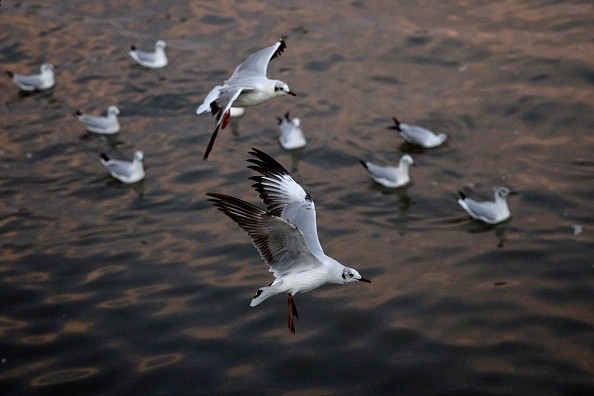A new study has identified four high-traffic locations in the Pacific Ocean that should be prioritized if big pelagic fish conservation initiatives such as tuna, blue marlin, and swordfish are to be effective.
Pelagic long-distance migratory fish (hatching in freshwater) and catadromous eels (hatching in seawater) move from the sea towards freshwater resources either from surface water or even further into the sea throughout their life cycles.
'Blue Corridors' For Highly Migratory Fish
 (Photo : JACK TAYLOR/AFP via Getty Images)
(Photo : JACK TAYLOR/AFP via Getty Images)

Scientists at UBC's Sea Around Us initiative outlined the provisional migration patterns of 11 tuna and other large pelagic fish in the Pacific Ocean by studying the natural inclination of fish to revert back to their place of birth to reproduce a process known as philopatry that is often, and incorrectly, assumed to implement only to salmon species and combining such understanding with capture allocation maps, tagging, and genome sequencing studies.
Scientists used the idea of philopatry to movements gathered from tracking investigations of organisms, such as the near-threatened Pacific bluefin tuna and the intensively fished yellowfin tuna, and we linked this data with genetic linkages across populations.
This enabled experts to detect preliminary yearly migration cycles, according to Veronica Relano, a doctorate candidate at the Sea Around Us and the study's principal author.
The fascinating thing is that they have discovered several similarities when they compared the suggested migratory pathways to the plotted catch data from 1950 to 2016 accessible on the Sea Around Us website.
Clearly, considering philopatry strengthens the correctness of these paths, she noted, but they are still uncertain, as per ScienceDaily.
Such high-traffic areas, two of those were in the northeastern and central Pacific Ocean and two in the southwestern and central Pacific Ocean must become part of blue hallways, which are pathways where stringent catchment management initiatives or partial bans on industrial fishing should be imposed to permit for interconnectivity of habitat types and therefore allow population numbers of marine organisms to sustain themselves, according to Dr. Daniel Pauly, co-author of the study and a marine biologist.
Also Read: 'Ecological Trap'- Arctic No Longer Safe for Migrating Animals Due to Rising Temperatures
Migratory fish
Salmon spend most of their lives in the sea, then return to rivers to spawn. They are guided by their sense of smell and their memory of the fragrance of their native waters.
This is referred to as "homing."
Because this trek is exceedingly exhausting, most salmon only perform it once in their lives.
Meanwhile, eels swim in the reverse direction. It spends most of its entire lifecycle in the river and spawns in the Sargasso Sea, which is located south of the Bermuda Islands in the Atlantic Ocean.
After three years, the eel larvae reach European coastal waters and develop into glass eels, which frequently travel upstream in large swarms.
They reach their maximum size after several years of living in the rivers.
They return to the Sargasso Sea to reproduce after they reach maturity (females after 12-15 years).
The Rhine watershed was formerly an important habitat for migrating fish. The Rhine was naturally devoid of barriers from the North Sea to the Rhine Falls at Schaffhausen.
Immature salmon could relocate downriver into the North Sea and the Atlantic Ocean mostly without encountering any obstructions from the hatching and juvenile territories in the watercourses, even in the Alps, the Black Forest, and the Vosges, and then bring it back to their native lands once they were ready to spawn.
Consequently, the growth cycle of long-distance migrating fish remained uninterrupted, and self-sustaining communities were preserved.
Related article: Bird Migration: The Search For Fruit-ful Rest Stops
© 2024 NatureWorldNews.com All rights reserved. Do not reproduce without permission.





